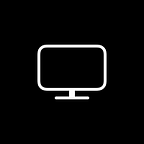The impact of visual design
It’s good to have a little fun and explore the topics that sparkle our curiosity from time to time. I often spend weekends doing visual explorations. Some may call it visual porn, but my aim is to let go of architectural problems, strip all the “big” questions off and find a visual harmony and information density that works for me.
This is why this time I chose email.
Most Email apps are crammed, uninviting and as a result, the reading experience tends to be stressful. I don’t want to read my emails.
I want such an important app to present the content I’m reading like a magazine. Sure, there will be less-than-ideal emails, bills, projects that didn’t go well, etc… but I should be able to focus on the content I’m reading, and not on the tools around it.
An app that I use every day should feel open, spacious, light.
Therefore, the main goal for this little project is to present a simple layout and using colour in a meaningful way, to let the content breathe.
This is what two popular email clients look like:
They don’t look inviting, nor like something I’d enjoy to read.
Visual design should aim to make a complicated app look simple, using meaningful clusters, providing visual hierarchy and generating a spacing that feels airy.
For this interface, I removed unnecessary divider lines, used a simplistic duotone (black & white + highlighting colour) palette and worked with simple icons.
Colouring the title bar white can help reduce visual noise. And positioning tools on top of the email gives context rather than being tucked away in a toolbar.
The second most important part for email is writing emails, so it makes sense to have the text formatting tools placed next to the writing area. The main action, send, is given top priority, locked at the top.
All of this is throwaway work.
None of these designs will become a product, and there’s far too many features and constraints I deliberately ignored. But there’s a benefit in letting go of those in order to find weak points you can improve, to provide focus on reducing visual clutter (in this case).
Tools are becoming increasingly more powerful and they often grow more and more complicated. As designers we should strive to make our apps friendlier, not busier. There’s a lot of great examples out there, starting with Evernote for web and Medium.
Next time you find yourself designing a complicated product, just stop, take a moment. Get rid of all the limitations you have for just a couple of hours and focus on simplifying and reducing all the noise. Then go back to your project and apply what you’ve just explored.
If you’re interested, you can view the full size mock here.
Notes: This post is not meant to be a throughout critique of other email clients but more a consideration of how a simple visual design changes our perception of an interface.
